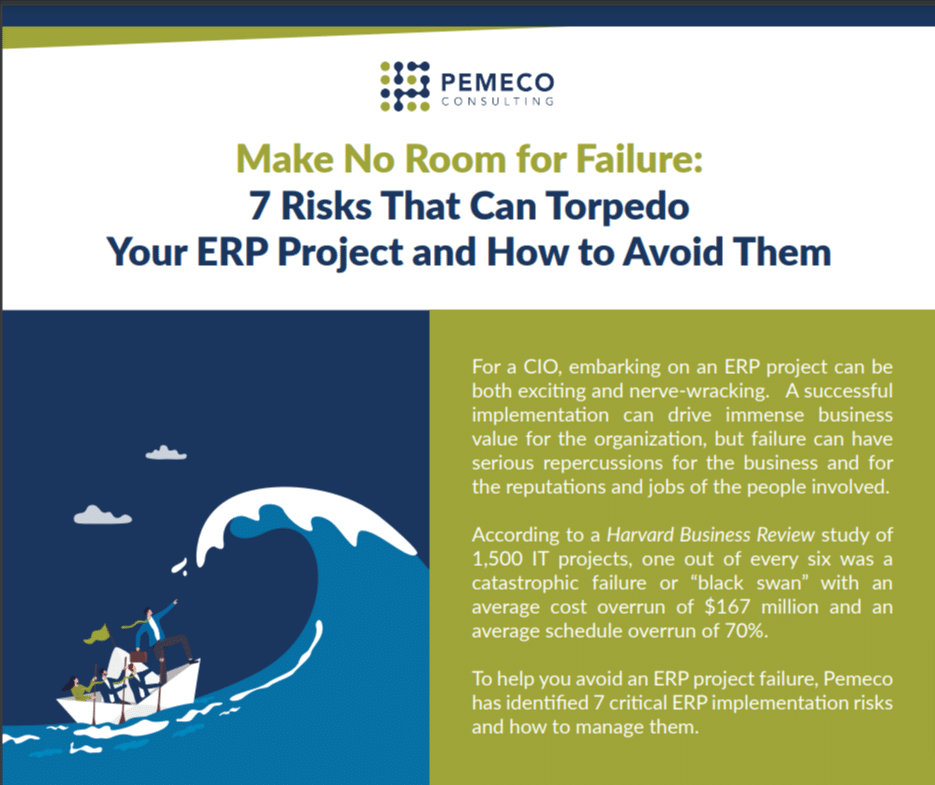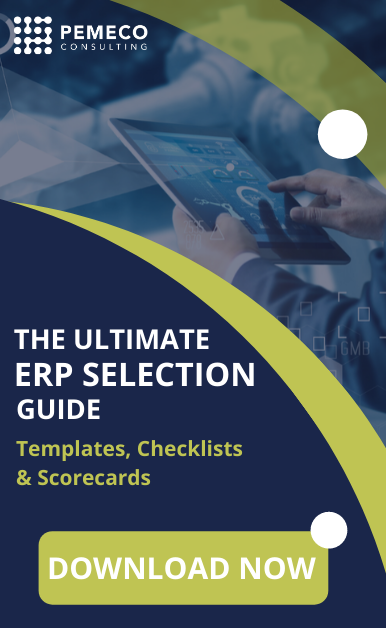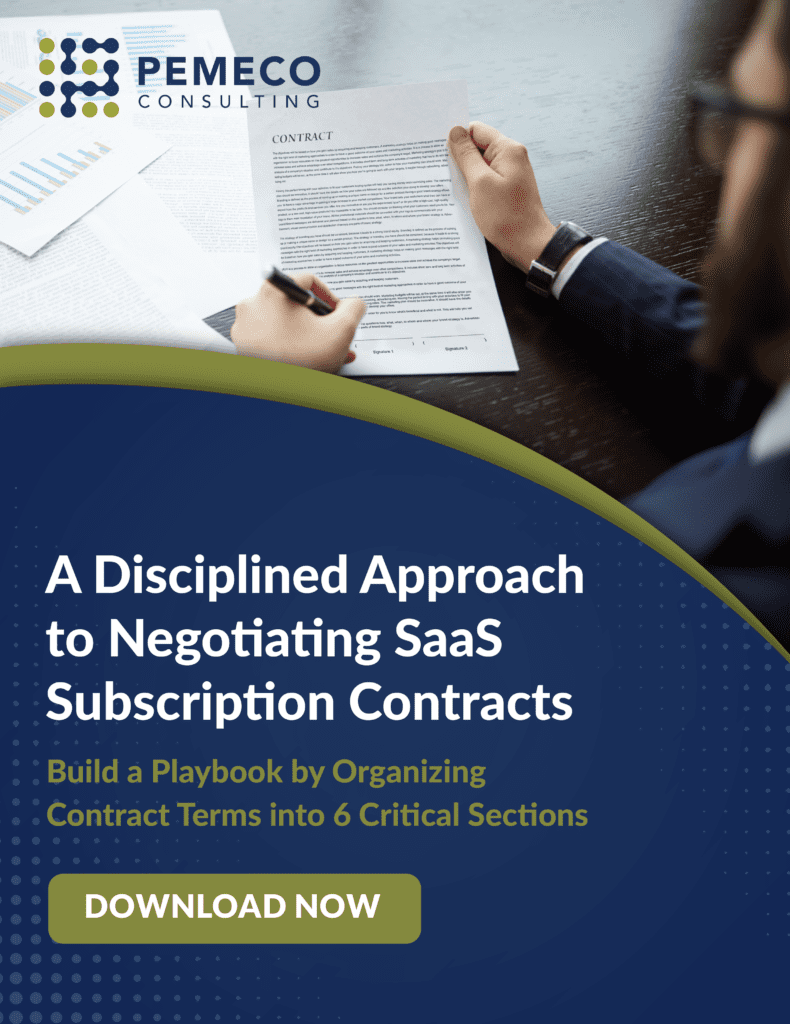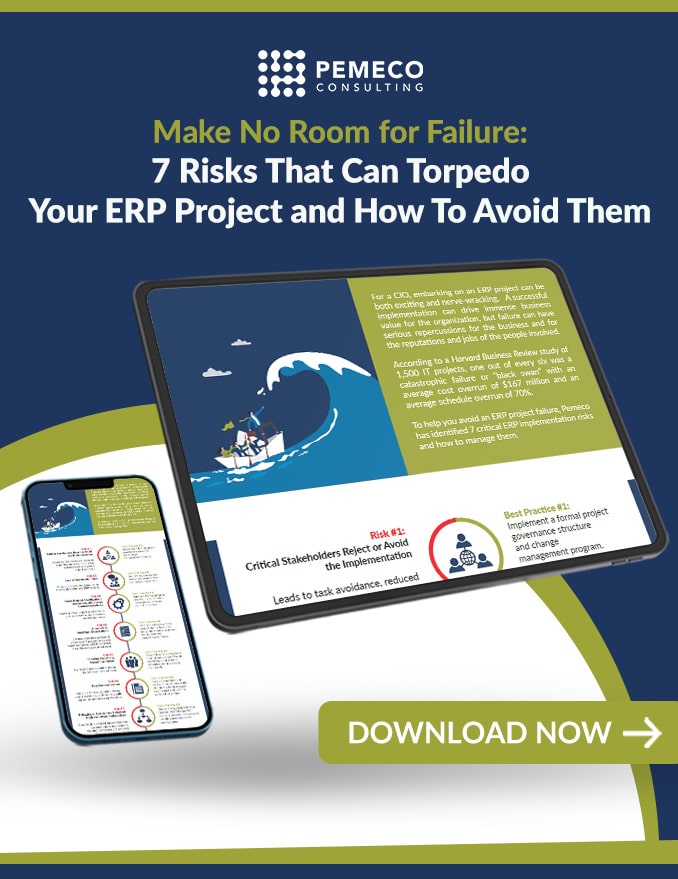I recently met with the IT director of a North American auto parts distributor. He told me that his company was very unhappy with its new ERP system.
For one, he said, the finance module can’t handle the company’s multiple revenue recognition scenarios. He also told me that the order-processing module couldn’t handle a type of order that accounts for 10 percent of his business’ revenues. In his view, the ERP project is a failure.
According to research by IT research firm the Standish Group, 68 percent of all IT projects are considered to be failures.
Unfortunately, stories like this are too common.
The good news is that your company can succeed where others have failed. It can reap the ERP benefits of integration and timely analytics that have eluded many. The (not so) secret recipe: hard work and commitment. Too many companies cut the wrong corners.
Statistics show that a key driver of ERP success is organizational commitment. This commitment has to start at the ERP selection phase.
 The Ultimate ERP Selection Guide: Templates, Checklists & Scorecards has powered hundreds of companies to select the right software at each stage. These tools and templates will power your project with best-practices so you can make the right decisions for your ERP project teams, requirements, budgets and evaluation of vendors, as well as equip you with ERP demonstration script templates, selection scorecard template, analysis of best-practices, and digital transformation and ERP selection checklist.
Accelerate your project by downloading the Ultimate ERP Selection Guide: Templates, Checklists & Scorecards here.
The Ultimate ERP Selection Guide: Templates, Checklists & Scorecards has powered hundreds of companies to select the right software at each stage. These tools and templates will power your project with best-practices so you can make the right decisions for your ERP project teams, requirements, budgets and evaluation of vendors, as well as equip you with ERP demonstration script templates, selection scorecard template, analysis of best-practices, and digital transformation and ERP selection checklist.
Accelerate your project by downloading the Ultimate ERP Selection Guide: Templates, Checklists & Scorecards here.
Here is a five-step checklist to help you pick the right system.
Step #1: Allocate Plenty of Lead Time
Many companies make the mistake of underestimating the amount of time it takes to find the right ERP system and implementation partner. The selection process can be as short as a few months or as long as a year if your business operates in an under-served sector. Assuming that your business operates in a well-served market, you should expect to spend between three and six months on a selection project.Step #2: Build a Strong Business Case
When a company invests one to three percent of its annual revenues in ERP, it had better have a well-developed business case with well-supported projections. Developing realistic and achievable projections requires a process-level understanding of current business issues and an understanding of the roadblocks to achieving future goals. When our firm develops business cases for clients, we undertake a fairly comprehensive analysis. First, we map the client’s existing business processes. Then, we benchmark those processes against best-practices and corporate objectives. This gives us a basis to prioritize and plan software requirements as well as implementation and change management efforts.Step #3: Translate Business Needs into System Requirements
This is where the business and operational issues are translated into ERP system requirements. Since it’s impossible for any ERP system to address all of a company’s needs, we prioritize and weight each requirement relative to the client’s business goals and constraints. The weighted requirements should then be assembled into a vendor evaluation scorecard. This scorecard forms the backbone of a request for proposal delivered to ERP vendors.Step #4: Do the Diligence on the Software
This step contains two sub-stages. The first sub-stage typically involves an evaluation of the software against a client’s critical, non-negotiable business, technology, and implementation needs. The due diligence tools often include requests-for-information (RFIs), more detailed requests-for-proposals (RFPs), and product demonstrations. Through this preliminary assessment, an initial vendor list is reduced to a shortlist. In the second sub-stage, each of the shortlisted vendors is invited to give a much more detailed demonstration of software functionality and underlying technology. During the demonstration, the vendor shows how its ERP system works in a simulation of your business environment. Depending on the client’s needs, these detailed demonstrations can last from one to four days per vendor. Following an analysis of the demonstrations, you should have a good idea of how well the shortlisted candidate ERP software packages meet your business’ needs. If doubts remain, you should solicit additional demonstrations. Don’t worry about inconveniencing the vendors. With the size of your potential investment and the high risks of failure, you’re better off double dotting some “I’s”. At the conclusion of the demonstrations, your task isn’t yet complete. You should still validate your analysis through reference checks on the software packages as well as candidate implementation partners.Step #5: Negotiate the Contracts
You might be in the homestretch, but you’re not yet ready to cross the finish line. Negotiating contracts for licenses, maintenance and implementation services takes hard work… and time. Your company should never accept the blindly vendor’s terms, particularly if those terms don’t drive your company’s objectives. Depending on the complexity of the deal, you can expect the contracting phase to take between three weeks and four months.Conclusion
By picking the right ERP software, you can position your business to achieve levels of productivity, efficiency, and agility that might otherwise be unattainable. If you don’t take the selection process seriously, your business could wind up married to the wrong system. And where would that leave you? As one of those unsatisfied survey respondents lamenting its IT project failures.Download The Ultimate ERP Selection Guide: Templates, Checklists & Scorecards
Whether your company is in the early stages of planning its digital transformation or is evaluating ERP vendors, you need to make sure you’re making the right decisions at each stage. The Ultimate ERP Selection Guide: Templates, Checklists & Scorecards has powered hundreds of companies to select the right software at each stage. These tools and templates will power your project with best-practices so you can make the right decisions for your ERP project teams, requirements, budgets and evaluation of vendors, as well as equip you with ERP demonstration script templates, selection scorecard template, analysis of best-practices, and digital transformation and ERP selection checklist.
Accelerate your project by downloading the Ultimate ERP Selection Guide: Templates, Checklists & Scorecards here.
The Ultimate ERP Selection Guide: Templates, Checklists & Scorecards has powered hundreds of companies to select the right software at each stage. These tools and templates will power your project with best-practices so you can make the right decisions for your ERP project teams, requirements, budgets and evaluation of vendors, as well as equip you with ERP demonstration script templates, selection scorecard template, analysis of best-practices, and digital transformation and ERP selection checklist.
Accelerate your project by downloading the Ultimate ERP Selection Guide: Templates, Checklists & Scorecards here.





